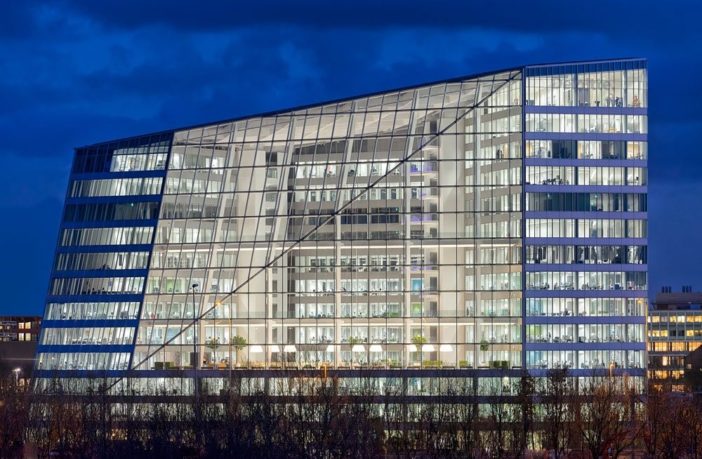The Edge office building in Amsterdam is smart, really smart. It makes use of artificial intelligence to direct human behaviour in a way that no other building does. The result is an integrated building management system which synchronises the buildings users with the buildings green features, in order to optimise performance.
There are a number of constructed green buildings that can claim to be the greenest in the world. The world’s greenest sky rise has to be the Shanghai Tower in China at 632meters. The 128-storey tower was awarded the top green rating, LEED Platinum, proving that tall can also be green.
The Bullitt Centre, Seattle, USA proves you don’t have to be huge to be green. They pioneered a new approach, known as the Metered Energy Efficiency Transaction Structure (MEETS). MEETS aligns the interests of all parties – building owners, utilities, ratepayers, tenants, and investors – by turning buildings into revenue generating energy efficiency power plants.
However, The Edge Amsterdam sets itself apart by its intelligence and specifically it artificial intelligence. ‘Het nieuwe werken’ meaning ‘a new way of working’ implies just that. It’s about using information technology to direct the way people work and optimises the spaces in which it is done.
The building has all the usual green features one would expect from a premium green building. The value ad is integrating and directing human behaviour to optimise the performance of the features and design. The end result is the highest sustainability score ever awarded by British rating agency BREEAM at 98.4 percent
Here are just some of the intelligent technology and ground breaking features deployed:
- A smart phone app designed for the tenants will check a building users schedule and if required will find parking and dedicate a desk for that specific day. The informal workspace means no one has a dedicated desk – workspaces are based on ones schedule for that day and may include: sitting desk, standing desk, work booth, meeting room, balcony seat, or concentration room. Wherever you go, the app knows your preferences for light and temperature, and it tweaks the environment accordingly. Wow!
- The super-efficient LED panels, made by Philips specifically for the Edge, require such a trickle of electricity they can be powered using the same cables that carry data for the Internet. The panels are also packed with sensors—motion, light, temperature, humidity, infrared—creating a “digital ceiling” that wires the building like synapses in a brain. All told, the Edge is packed with some 28,000 sensors.
- The atrium and its iconic slanted roof, which looks from the outside as if a wedge has been sliced off the building, floods the workspaces with daylight and provides a sound buffer from the adjacent highway and train tracks. Every workspace is within 7 meters of a window.
- About 2,500 Deloitte workers share 1,000 desks. The concept is called hot desking, and it’s supposed to encourage new relationships, chance interactions, and, just as important, efficient use of space.
- Real time reporting on energy and water use plus carbon emissions.
- There are also game rooms and coffee bars with espresso machines that remember how you like your coffee.
- Massive flat screens around every corner can be synced wirelessly with any phone or laptop.
- On days when fewer employees are expected, an entire section might even be shut down, cutting the costs of heating, cooling, lighting, and cleaning.
- A robot security guard patrols the building at night which is monitored and controlled centrally.
- It produces more electricity than it consumes as a result of its energy-saving design and use of solar and geothermal energy. The building also uses energy from solar panels located nearby at the University of Amsterdam.
The Edge sets a benchmark for all green buildings by shifting focus to the building user in order to direct a change in the way we work to optimise efficiency. It shows us that the use of artificial intelligence will become more prevalent in green buildings going forward. Hopefully the technology will also be more rewarded as green building rating tools evolve to promote better building performance.
Author: Bryan Groenendaal















